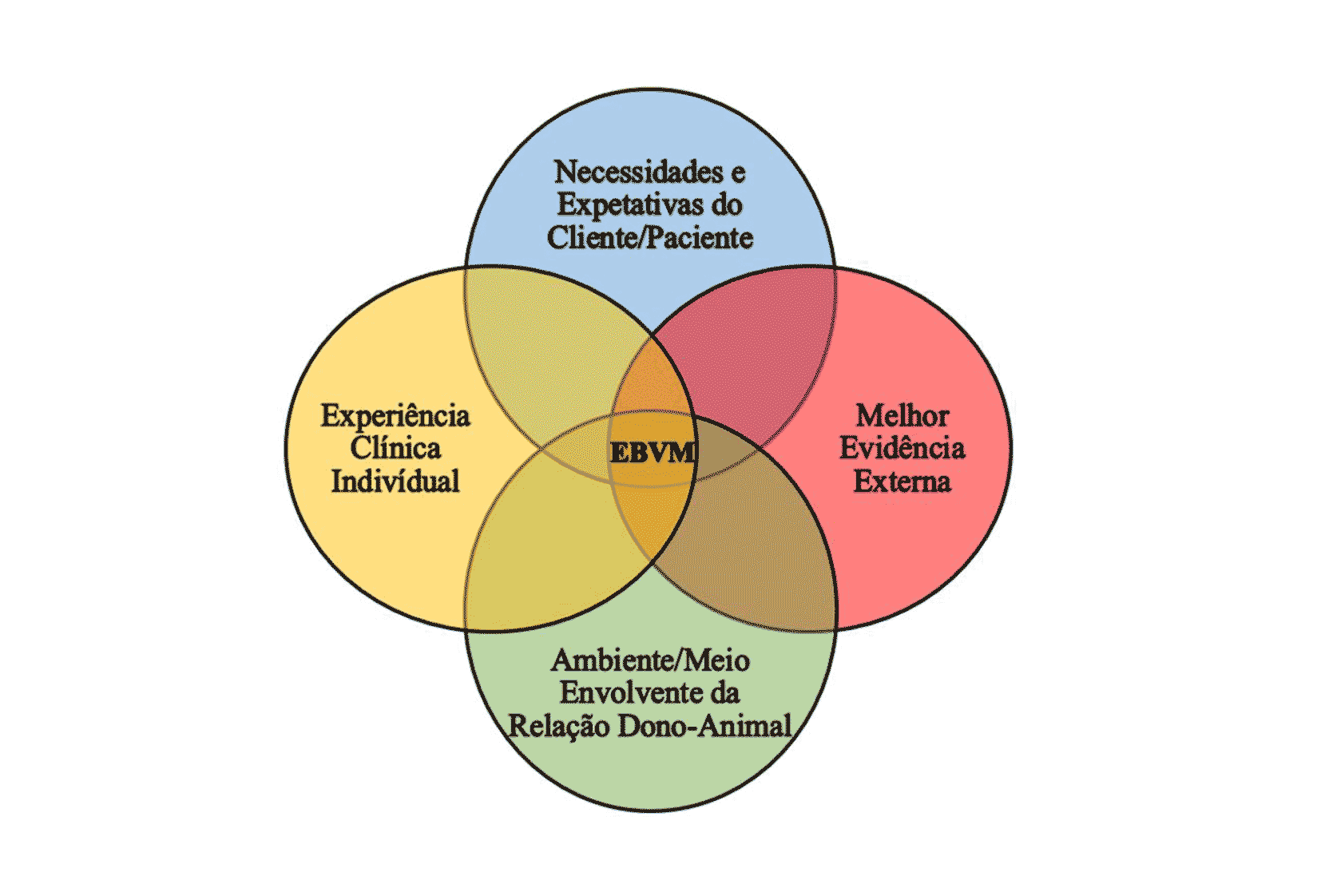LUÍS SARAIVA DA COSTA
Adaptation of the Evidence-Based Medicine Model to the Veterinary Context
Evidence based medicine is a movement which intends to increase quality in medicine, by advocating that clinical practice should be based on the most recent and best scientific evidence available. Acknowledging the importance of environmental factors in animal health, as well as in the relationship between pet and pet-owner, it is suggested that EBVM (Evidence Based Veterinary Medicine) may be conceived as the confluence of 4 dimensions, instead of 3, namely: individual clinical expertise; needs and expectations of the owner; use of the best external available evidence; environmental factors and their influence on pet-owner relationship.
In the suggested method, the studies are framed into six classification dimensions in which they are categorized as: primary or secondary research; individual or group based; experimental or observational; analytical or descriptive; longitudinal or non-longitudinal; study design type. Abiding by the aforementioned classification system it is also suggested an adaptation of the strength of evidence pyramid method. The suggested classification method was used in a systematic scoping review in which, evidence about gonadectomy effects in dogs and bitches was mapped from the Pubmed database. After identification and exclusion phases, 191 studies were selected for analysis. The 3 most studied themes were the musculoskeletal system, urinary tract and neoplasms. The most frequent research methods were RCT and NRCT in the experimental category and analytical full cohort studies; case-control and analytical cohort in the observational studies category.



